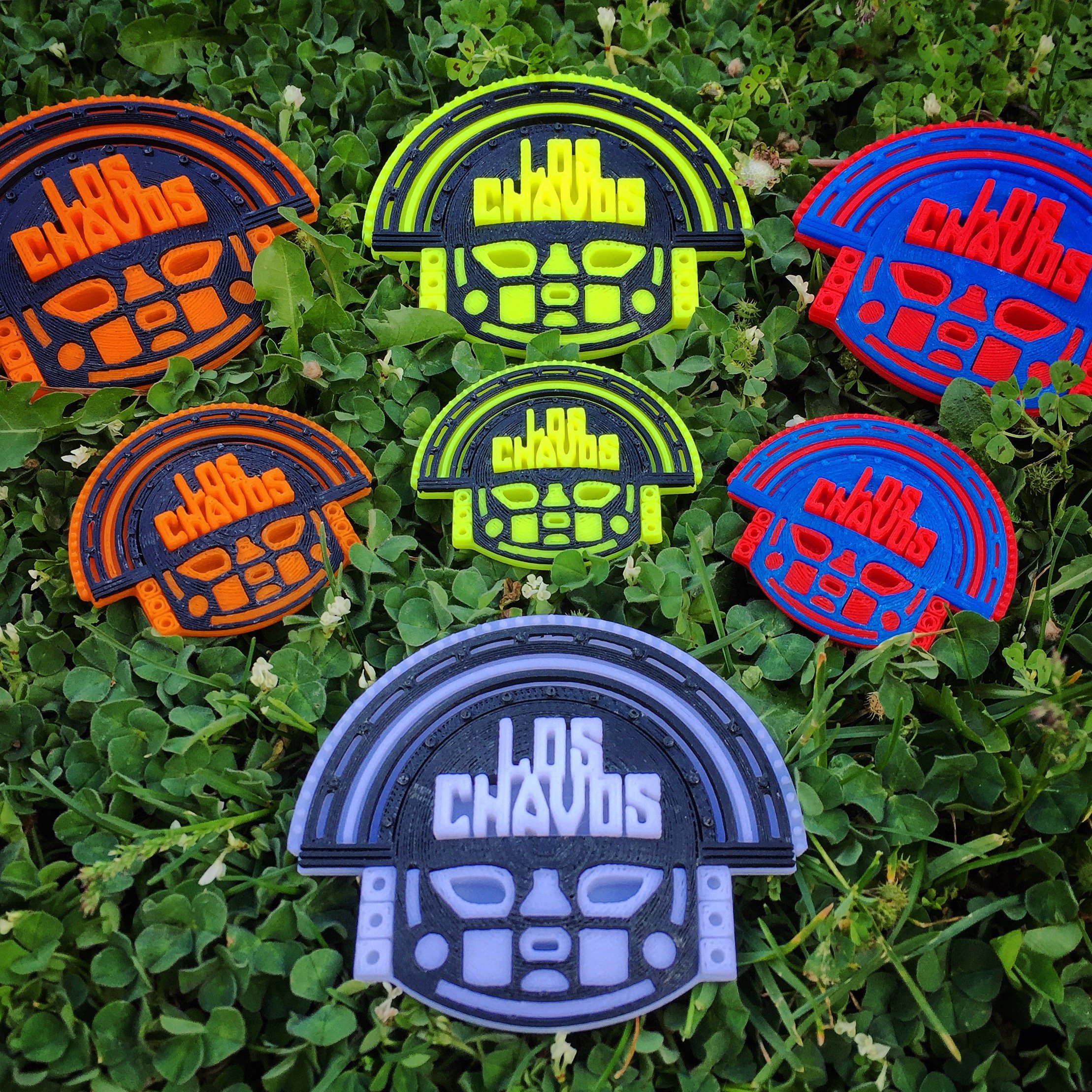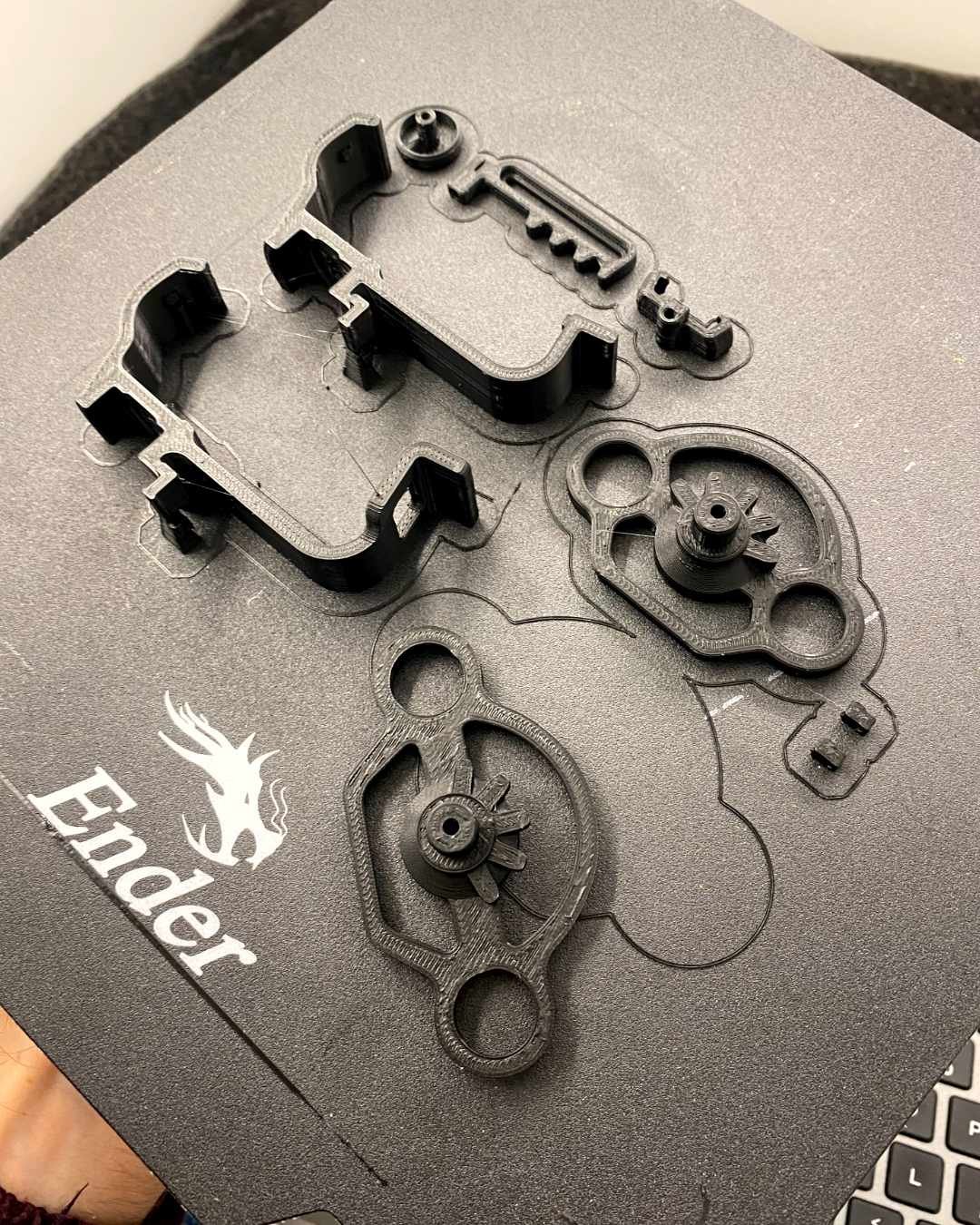What is FDM/FFF - Filament 3D Printing
Additive manufacturing is a computer-controlled process that builds three-dimensional objects by layering material-upon-material - often referred to as 3D printing. This fabrication tool allows for precise and intricate production of objects, ranging from prototypes to end-use products. In contrast, subtractive manufacturing removes material until only the finished product is left, e.g. CNC milling or laser cutting. 3D printing moves a tool-head on three axis along a precise path, adding material to produce the desired object.
Among the various methods of 3D printing, Fused Deposition Modeling (FDM) - also called Fused Filament Fabrication (FFF) - is the most widely recognised 3D printing technology. FDM 3D printing uses spools of plastic as the building material. Plastic filament is cheaper than other additive manufacturing materials, and is available in a wide range of types and colours. This makes it a very versatile form of additive manufacturing.
Knowledge Guides
The Additive Process
At a glance, important features to note about an FDM printer are:
The Filament - The plastic material used.
Tool End and Nozzle - The point where the filament is heated and extruded.
Movement System - In most cases this consists of the stepper motors, rails, and pulleys.
Print Bed - The surface that molten/melted plastic is deposited onto, and the base of the build area.
FDM 3D printing begins with the spool of plastic filament, which is threaded into the printer until it engages with the feeder motor. The feeder motor (stepper motor) pushes the filament through the tool end (heating block), where the plastic is quickly heated to a semi-liquid state long enough for it to be expelled (extruded) from the nozzle by the back pressure. The plastic is precisely extruded from the nozzle in synchronisation with the movement system, depositing a thin line of plastic that sticks to the print bed. The plastic begins to solidify as it is extruded, which is assisted by fans blowing air on the nozzle.
The tool-end continues to move on the X and Y-axis following the pre-coded pattern for each layer, and then moving up the Z-axis to build each layer. This is repeated, bonding each layer of plastic with the previous layer to gradually form the final object.
There are various types of FDM 3D printing filaments available, with unique material properties. Particular print settings are required to be adjusted for different filament types to account for: the melting point, viscosity, and how quickly the plastic shrinks or expands after being extruded. There are also different configurations of FDM 3D printers that make some machines better at printing certain materials.
(A knowledge guide is currently being written that details the entire design and 3D printing process, from digital model to post processing. Please check back again for this update.)
Outcome
FDM offers a great balance between material strength, affordability, and the ability to produce high-quality 3D printed parts. Limitations of this process can include the printer's build volume, and noticeable layer lines, which can detract from the visual appeal. Overall, FDM is still a strong choice for a wide range of applications because of its versatility and accessibility.
Material Strength
FDM 3D printing offers a wide range of materials, including PLA, ABS, PETG, and more. While these materials have varying strengths, FDM is recognised for producing durable and functional parts. In comparison, industrial processes such as injection moulding or CNC machining will likely be stronger and more precise than FDM parts. Material and process choices are a case by case basis, and we can facilitate different fabrication processes.
Affordability
FDM 3D printing is one of the most affordable additive manufacturing processes available. The pricing structure for 3D printing services depends on factors, including the complexity of the project, the materials used, and the size of the object.
FDM has a low setup cost, with highly affordable material (per unit) cost. This makes FDM good for low to medium production runs. In comparison, a process such as injection moulding has a higher setup cost due to the mould-making step, but a very low unit cost with fast turnaround time. This makes injection moulding better for large production runs.
3D printing is a more flexible process, and doesn't have the same constraints as traditional manufacturing processes. Designs can be changed based on new findings, and production updated without a significant cost increase. An additional advantage is that items can be produced closer to the point of use, specifically here in Canberra and on demand. This helps shorten turnaround time and eliminates costly postage.
Print Quality
The print quality of FDM parts can be excellent, especially when using higher-end FDM printers with precise components and quality materials. The additive process can produce smooth contours, intricate details, and complex geometries. Additionally, the broad spectrum of available thermoplastic materials offers a vast range of colours and surface finishes, from matte to glossy, and even translucent options. There are now more end-use parts and products being fabricated with FDM 3D printing.
The layer lines in FDM 3D prints are visible as a texture on the surface. This texture can be felt when touched. This may be aesthetically pleasing or can detract from the finished print, depending on the project. Careful planning when designing and refining the print settings can help to draw attention or hide these layer lines. The final appearance may be improved with post-processing techniques, such as acetone smoothing, sanding or painting.
For smaller objects that require super fine detail, a better option may be SLA/DLP resin 3D prints. This process uses a vat of liquid resin that is precisely cured by light. FDM resolution is limited by how small you can make the nozzle and layer lines. In comparison, SLA/DLP 3D printing is limited by how small you can make a point of light.
Size Limitations
FDM 3D printers come in various sizes, from compact desktop models to large-scale industrial machines. The size of the 3D prints are limited by the build platform (print bed size), however, this shouldn’t restrict the size of the objects you can build. Oversized items can be assembled from multiple smaller printed components. Projects can also incorporate multiple other fabrication processes to achieve a product that is larger, stronger, or more detailed. Such as using wood elements, CNC parts, or laser cutting.
Applications
FDM 3D printing has found applications across a wide range of fields and industries. Some notable applications include:
Prototyping: FDM is widely used for rapid prototyping. Inventors and designers can quickly iterate and test their designs.
Consumer Goods: The consumer goods industry utilises FDM for producing custom, one-of-a-kind items, like personalised items and home decor.
Education: 3D printing has become a valuable tool in educational settings. Schools and universities use it to teach engineering and design principles.
Fashion and Jewellery: Fashion designers have experimented with FDM to create unique accessories, shoes, and clothing.
Art and Sculpture: Artists have used FDM 3D printing to create intricate sculptures and artwork.
Automotive: InIteration have used FDM 3D printing to produce car interior upgrades, and replace old parts that are no longer available.
Healthcare: FDM is employed in the medical field to create customised prosthetics, dental implants, and orthopaedic devices. It's also used for anatomical models and surgical guides.
Architecture and Construction: Architects use FDM to build scale models of buildings and structures. In construction, 3D printing is used for creating prototypes of construction components.
Related articles:
Past Work - Canberra 3D Print on Demand Services
FDM 3D printing in action, depositing fine lines of plastic.










